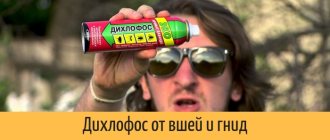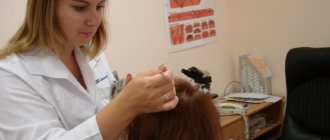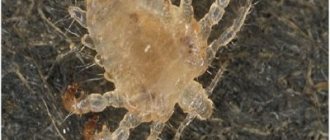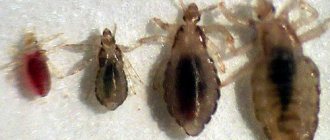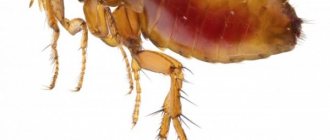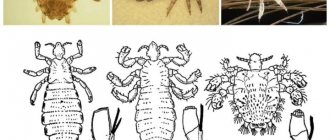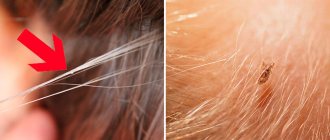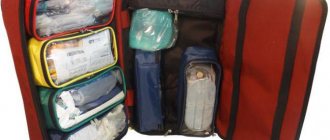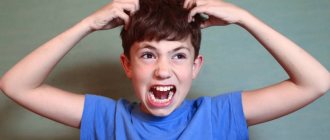Main causes of head lice
When thinking about where you can pick up lice, do not forget that they are transmitted only from person to person; You cannot get lice from domestic or stray animals.
Here are the main causes of head lice:
- failure to comply with personal hygiene rules;
- close contact of a healthy person with a head lice infection;
- living in conditions of complete unsanitary conditions, and this is simply an ideal environment for the rapid proliferation of parasites;
- sharing hats and other headgear, as well as combs, hairpins, etc. with the infected person;
- use in public saunas, bathhouses of towels and other items that have not been carefully processed.
Factors that will increase the risk of infection:
- visiting beauty salons and hairdressers where the craftsmen do not follow hygiene rules and do not disinfect their tools;
- accommodation in a hostel, hotels (without regular treatment);
- constant use of crowded public transport;
- use of cloakrooms in public places;
- Swimming in public pools and ponds with standing water without a swimming cap.
The female louse lays up to ten eggs per day, and they attach to the hair with the help of a secretion secreted by the insects, which hardens quickly, which, in turn, allows the eggs to be fixed on the hair. That is why they are difficult to shake off, unlike dandruff.
Nits are attached closer to the scalp at a distance of up to one centimeter, where it is warm enough. The nits take seven to ten days to mature, and then the young louse hatches. It is similar to an adult, only smaller, and in about a week the parasites become adult, sexually mature insects.
Insect detection methods
You can detect head lice on your own or with medical help. It is enough to carefully examine the scalp under a bright light. At home, you will need to make the “suspect” sit down and ask him not to move.
Separate small strands of hair and examine them in good lighting. In short hair, you can check this with your hands. Long, thick, curly hair is best treated with a comb.
Adults are inactive, move slowly through the hair with their paws, and prefer to be close to the skin. Despite the erroneous belief of many, parasites are not capable of flying or jumping.
A gray, translucent hungry louse blends into the hair. It is easier to detect a well-fed insect. It has a characteristic brown color (the muted color of coagulated blood).
It is not difficult to recognize nits. Just look closely. Nits are round, light-colored formations attached at an angle to the hair, closer to the base. Upon quick inspection, nits are often mistaken for dandruff. They stick tightly to the hair, cannot be removed with your fingers, and are difficult to comb out with a comb. When a viable nit is crushed with your fingernails, a characteristic click is heard. Thanks to these signs, nits can be easily distinguished from common dandruff.
How does lice infection occur?
Not all people know how lice pass from one person to another, and therefore they believe that the parasites fly or jump, although in reality they just run quickly. For this reason, infection usually occurs through close contact between a healthy person and a sick person. Head lice can move through people's hair and spread to another person, so people with long, thick hair are more likely to get head lice.
Symptoms of lice do not appear immediately after infection, but after a week or several, because the parasites need to get used to the new host and conditions. Lice feed on human blood by piercing the scalp with their proboscis. Lice also have highly developed salivary glands; their saliva prevents blood clotting, which allows the insect to get enough, and causes itching in the host. The bites look like small red spots, which can also be used to determine the presence of lice.
Lice feed several times a day and live for about a month. The female lays eggs and attaches them to the hair so that it cannot be washed off with water, and a week later new insects hatch from the nits. The period of egg maturation is influenced not by water, as is supposed, but by the ambient temperature.
Lice and pediculosis: characteristics of the insect and the disease
Lice are ectoparasites that have been known since ancient times. It is difficult to immediately determine their presence in the hair. Parasites have an inconspicuous appearance:
- small body 4–5 mm;
- gray-brown color, merging with the hair color (from gray natural to brown in a well-fed state).
Insects live exclusively on the body of people and some anthropoid apes. This is due to centuries-old adaptation to living on the round section of hair. Lice are transmitted by contact, crawling from one hair to another. Where do lice come from, how can you get infected with them, you will find a detailed answer on our website.
The insect has legs with claws that allow it to be firmly held in the hair. The louse is guided solely by smell. Vision is an unnecessary addition, so the eyes are atrophied. The organ responsible for the insect's sense of smell is the antennae.
Lice feed on blood. The powerful mouth of the piercing-sucking type is equipped with needles for piercing the skin and a proboscis that operates on a pumping principle. The insect is not voracious, but it causes a lot of inconvenience to the “owner”:
- due to rapid reproduction (140 eggs per full life cycle of 45 days);
- injection of toxins into the blood during biting (causing severe itching, subsequent scratching, and formation of wounds);
- transmission of dangerous diseases (typhus, fever).
We recommend reading: lice wounds on the head, what parasite bites look like.
Pediculosis does not mean primary infection by insects. The disease is recognized as a complex of symptoms typical of the numerous presence of parasites. In medicine, pediculosis is a complex of manifestations caused by lice:
- itching;
- purulent rashes;
- allergic reactions;
- skin formations.
Important point! The appearance of an insect in the hair is not considered a disease. Violent vital activity causing clinical manifestations are signs of pediculosis. You often find out that you have lice after some time. You will find how long the incubation period of pediculosis in humans lasts on our website.
Methods of transmission of lice
These parasites can be transmitted in the following ways:
- through visiting public places, which are perhaps the most dangerous in the given circumstances. Schools, kindergartens and other institutions have more than once become sources of outbreaks of head lice;
- through water - lice actually have a way of surviving in this environment for some time, so it is quite possible to become infected in a pool or ponds with stagnant water;
- Close contacts are perhaps the most common way of contracting head lice. Hugging, having sex, playing - this is how you can catch lice;
- using things that are infected - a person may not know that, for example, a borrowed comb belongs to someone who has already become a carrier of parasites, which is why nits or adult parasites could remain on it.
Some people believe that it is also possible to catch these insects from animals, but this is not the case. Human lice do not take root on our pets, and animal lice are not dangerous to humans. Infection, in principle, is only possible through close contact between people, so that the parasites can crawl from one person to another, since they are not able to jump and fly.
Can lice appear on their own?
There are still so-called myths about how these parasites can be acquired. So, some still believe that lice can appear when a person is nervous a lot, or that they are inherited. This is absurd, because lice is not some kind of genetic disease, but a disease caused by parasites living on humans. Also, stress has no effect on insects, so if a person often worries, he will not get lice.
Some people also believe that the appearance of parasites is influenced by a person’s level of cleanliness. In principle, this is only partly true, since head lice, for example, will prefer clean hair to dirty hair, because in this case it is easier for them to attach nits and feed.
How to distinguish lice eggs from dandruff?
Adviсe:
- When dandruff and nits are detected, it is necessary to use completely different methods. Dandruff can be treated with antifungal shampoos that contain ketoconazole. This is due to the fact that most often dandruff is caused by the presence of a fungus on the skin, which is easily eliminated with Ketoconazole. This drug is absolutely ineffective against lice and nits.
- Only special antiparasitic agents that can be found in the pharmacy can cope with them. Most often they are presented in the form of a bottle of liquid. Recently, a spray has been used quite often due to its ease of use and the absence of the need to rub into the hair roots.
- Thus, with the help of these products it is possible to get rid of lice quite simply. Very popular shampoos with special poisons to remove lice and nits. More information about lice remedies can be found here . You can learn about dandruff treatment here .
Comb out lice and nits
As you can see, distinguishing dandruff from lice is quite easy, especially if you have some experience. Otherwise, arm yourself with a magnifying glass, a magnifying glass, and also look at photographs depicting nits and lice.
Favorable conditions for the spread of lice
As already mentioned, lice can be picked up in different places: from a kindergarten to a swimming pool and a hairdresser. Of course, lice infection most often occurs in kindergartens, schools, sports clubs and various clubs, even in children's hospitals. However, it is kindergartens and schools that suffer the most from this scourge. You should also not forget about the places where adults can become infected with head lice, namely in dormitories, barracks, at home from their children, and so on.
It takes very little for a completely healthy person to get lice – most often, contact with a sick person is enough. At risk are:
- small children, as they often play together without maintaining distance, which is an ideal condition for the spread of parasites;
- persons called up for military service living in barracks;
- living in hotels and hostels, since not all of these establishments carry out proper disinfection of bed linen, towels and other items.
The risk of contracting lice increases even more during the cold season, when people spend a lot of time indoors at a minimum distance from each other.
In light of this, favorable conditions for the spread of parasites are unsanitary conditions, crowded conditions and the presence of large numbers of people in small spaces.
If an infestation with just a few lice occurs, a person may not even feel it at first until new parasites hatch. When there are too many of them, the patient will begin to experience severe itching and scratch the scalp until wounds appear, which can lead to infection.
Remember, just because you've been cured of head lice doesn't mean you can't get it again unless the person's personal belongings have been disinfected and other carriers have been isolated and treated.

